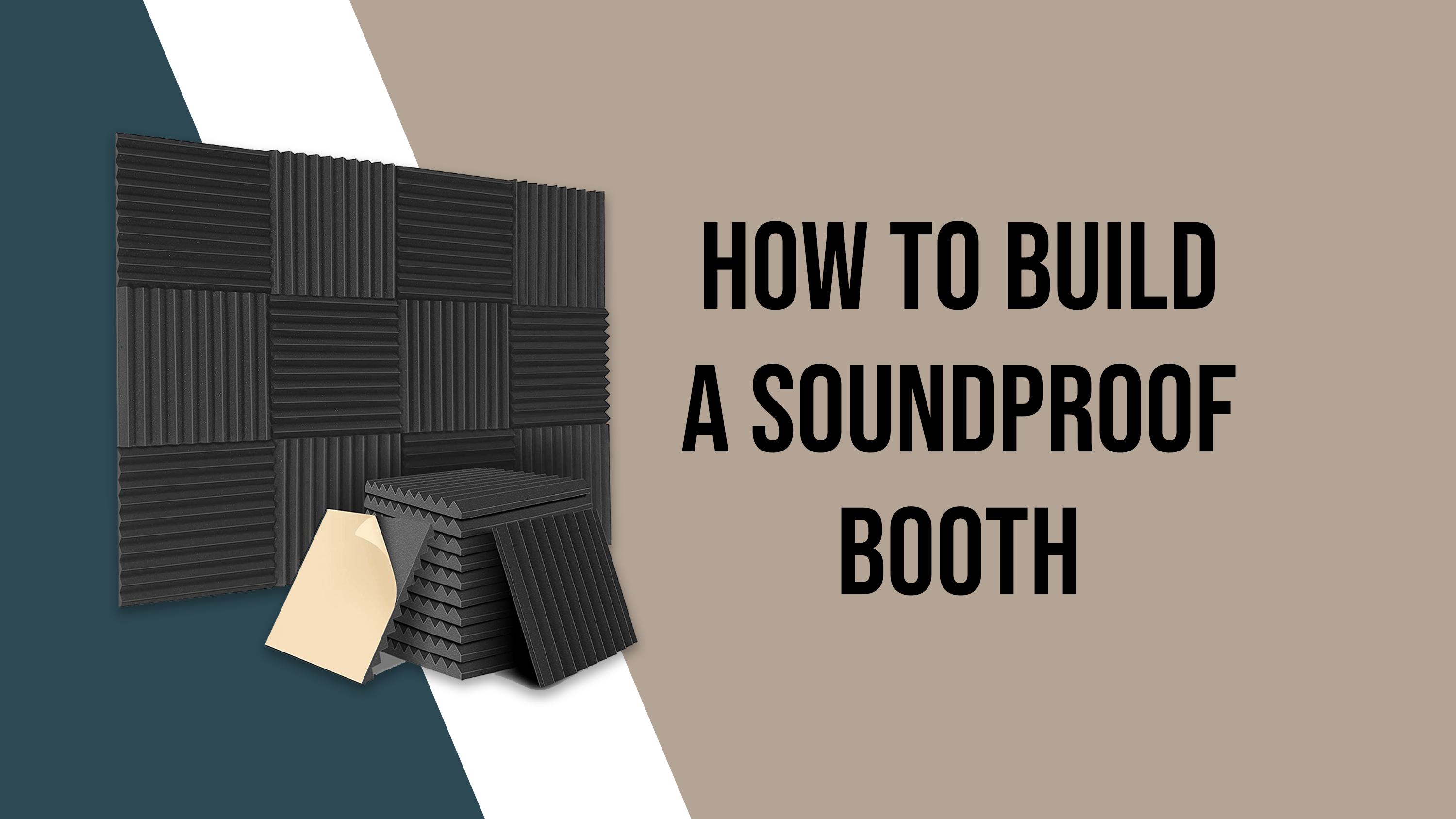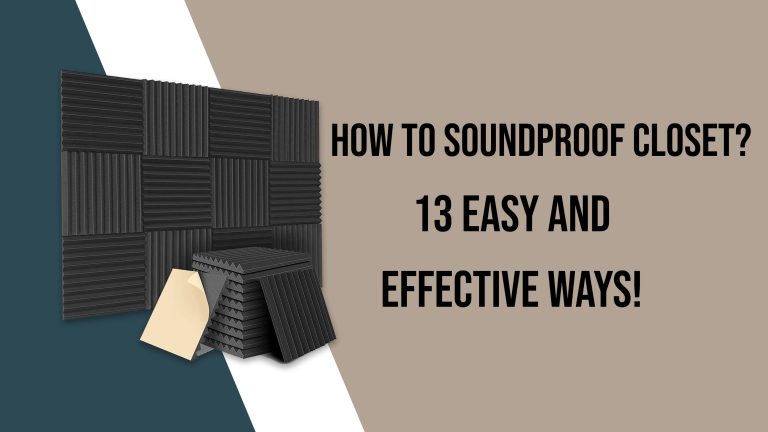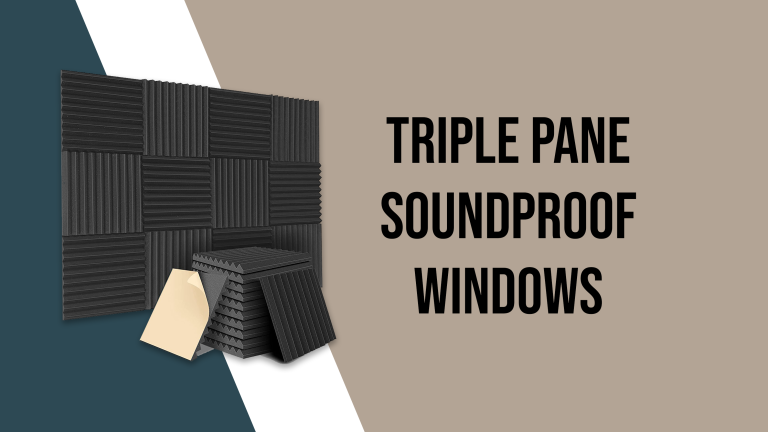How To Build A Soundproof Booth
Soundproofing a booth is essential for many industries and professions, including music recording, podcasting, and voice acting.
A soundproof booth helps to eliminate external noise and ensures that recording or broadcasting quality is not affected by background noise. As for band practices, you may also need to soundproof a basement.
If you’re looking to build a soundproof booth, this guide will walk you through the steps you need to take to ensure your booth is properly soundproofed.
How to Build a Soundproof Booth?
It’s important to use the right materials and to seal all gaps to ensure that the booth is properly soundproofed. Additionally, it’s good to monitor and maintain the booth over time to ensure that the soundproofing remains effective.
Steps to Build a Soundproof Booth:
Step 1: Measure Your Space
Before you begin building your soundproof booth, you’ll need to measure the space where you plan to build it. This will give you an idea of how much soundproofing material you’ll need, as well as how much space you’ll have to work with.
Step 2: Choose the Right Soundproofing Material
There are several types of soundproofing materials available on the market, including fiberglass, acoustic foam, and mass-loaded vinyl. Each of these materials has its own set of pros and cons, so it’s important to choose the one that best suits your needs.
Step 3: Install Insulation
Insulation is an essential part of soundproofing a booth. You can use insulation in the walls, ceiling, and floor of your booth to help absorb sound and reduce noise transmission.
Step 4: Install Soundproofing Panels
Soundproofing panels can be installed on the walls, ceiling, and floor of your booth to further reduce sound transmission. These panels can be made from a variety of materials, including acoustic foam and mass-loaded vinyl.
Step 5: Seal Any Gaps
Gaps around doors, windows, and other openings can allow sound to enter or escape your booth. To ensure that your booth is properly soundproofed, you’ll need to seal any gaps with weather stripping or acoustic caulk.
Step 6: Add Finishing Touches
Finally, you can add finishing touches to your booth to make it more comfortable and functional. This might include installing lighting, adding a ventilation system, or adding a sound system.
What Is A Soundproof Booth?
A soundproof booth is a small, enclosed space that is designed to block out external noise and sound. These booths are often used in recording studios, broadcast studios, and other settings where sound needs to be isolated and controlled. They are typically made of materials that are effective at blocking and absorbing sound such as soundproofing foam, mass-loaded vinyl, acoustic sealant, and heavy curtains or blankets.
The walls, ceiling, and door of a soundproof booth are specially designed and constructed to minimize the transmission of sound in and out of the booth, providing a controlled and quiet environment for recording and broadcasting.
Why Should You Build One?
There are a number of reasons why you might want to build a soundproof booth. Here are a few examples:
Recording:
If you are a musician or a voice actor, a soundproof booth can be essential for recording high-quality audio without interference from external noise.
Broadcasting:
If you are a radio or podcast host, a soundproof booth can help to eliminate background noise and echo, resulting in a clearer and more professional-sounding broadcast.
Testing:
Soundproof booths are used in various industries such as construction or automotive, to test the sound level of products, vehicles or building materials.
Privacy:
Soundproof booths can also be used in open office spaces or any other shared spaces for private phone calls or video conferences.
Concentration:
Some people find that working in a soundproof booth can help them to focus and be more productive, as it eliminates distractions from external noise.
Gaming:
Soundproof booths can be used by Gamers to enjoy their gameplay by reducing the noise coming from outside and also to reduce the noise that goes out.
Overall, building a soundproof booth can be a great investment if you need to control or eliminate external noise in order to improve the quality of your recordings, broadcasts, or work.
How to Build a Recording Booth
Building a recording booth can be a relatively involved process, but it can be done with some planning and effort. Here are the general steps you can take to build a recording booth:
Choose a location:
The first step is to choose a location for your recording booth. You’ll want to choose a room or area that is relatively isolated from external noise and has enough space to accommodate your recording equipment.
Measure the space:
Measure the dimensions of the space you have chosen for your recording booth. This will help you to determine how much soundproofing material you will need.
Gather materials:
You will need a variety of materials to build your recording booth, including soundproofing foam, mass-loaded vinyl, acoustic sealant, and heavy curtains or blankets. You can purchase these materials from a variety of sources, including online retailers or specialty soundproofing stores.
Install soundproofing materials:
Once you have your materials, you can begin to install them in the space. Start by attaching mass-loaded vinyl to the walls, ceiling, and floor. Then, use acoustic sealant to seal any gaps or seams. Finally, install soundproofing foam on the walls and ceiling.
Install a door:
A soundproof door will help to block external noise from entering the booth. You can purchase a pre-made soundproof door or make one using soundproofing materials.
Install sound-absorbing materials:
You can install sound-absorbing materials such as acoustic tiles or heavy curtains to further reduce the echo and reverb inside the booth.
Add lighting and ventilation:
You will also need to add lighting and ventilation to the booth to make it comfortable to use.
Test the booth:
Once you have completed the installation, test the booth to see how well it blocks external noise and sound. Make any necessary adjustments.
Keep in mind that building a recording booth can be a relatively involved process and may require some specialized tools and knowledge. If you are not confident in your ability to complete the project, you may want to consider hiring a professional to do the work for you.
FAQ’s
How do you make a soundproof booth?
To make a soundproof booth, you can use a combination of materials such as sound-absorbing foam, heavy curtains or blankets, and acoustic sealant to seal any gaps. Additionally, using a thicker, denser material for the walls, such as mass loaded vinyl, can also help to block sound.
How much does it cost to build a soundproof vocal booth?
The cost to build a soundproof vocal booth can vary widely depending on the size, materials used, and the level of soundproofing desired. A rough estimate for a small, basic booth could be around $500 to $1000, but for a larger, more professional booth the cost could be several thousand dollars.
How do you make a sound booth at home?
To make a sound booth at home, you can use a combination of materials such as sound-absorbing foam, heavy curtains or blankets, and acoustic sealant to seal any gaps. Additionally, using a thicker, denser material for the walls, such as mass loaded vinyl, can also help to block sound. You can also use a separate room or closet and use soundproofing materials to seal the door and windows.
Are sound booths soundproof?
Sound booths are typically designed to be soundproof to a certain degree, but the level of soundproofing can vary depending on the materials and construction used.
What materials can block sound?
Materials that can block sound include heavy curtains or blankets, acoustic sealant, mass loaded vinyl, and sound-absorbing foam.
What materials can block sound best?
Materials that block sound best include solid concrete, brick, and drywall.
What absorbs sound best?
Materials that absorb sound best include sound-absorbing foam, heavy curtains or blankets, and acoustic tiles.
How do you make a cheap soundproof box?
To make a cheap soundproof box, you can use a combination of materials such as sound-absorbing foam, heavy blankets, and acoustic sealant. Additionally, using a thicker, denser material for the walls, such as mass loaded vinyl, can also help to block sound.
Can I use egg cartons to soundproof?
Egg cartons can be used to soundproof to a small extent, but they are not very effective. They are better suited for sound absorption than soundproofing.
Can I build a soundproof room?
You can build a soundproof room, but it can be costly. The cost will depend on the size, materials used, and the level of soundproofing desired.
What is the cheapest way to soundproof a shed?
The cheapest way to soundproof a shed would be to use materials such as heavy blankets, sound-absorbing foam, and acoustic sealant to seal any gaps. Additionally, using a thicker, denser material for the walls, such as mass loaded vinyl, can also help to block sound.
Conclusion
Building a soundproof booth requires careful planning and attention to detail, but with the right materials and a bit of effort, it can be done. By following the steps outlined in this guide, you’ll be able to build a booth that is properly soundproofed and suitable for your needs. Remember that soundproofing is an ongoing process, so you will need to monitor and maintain your soundproofing over time to ensure that it remains effective.








